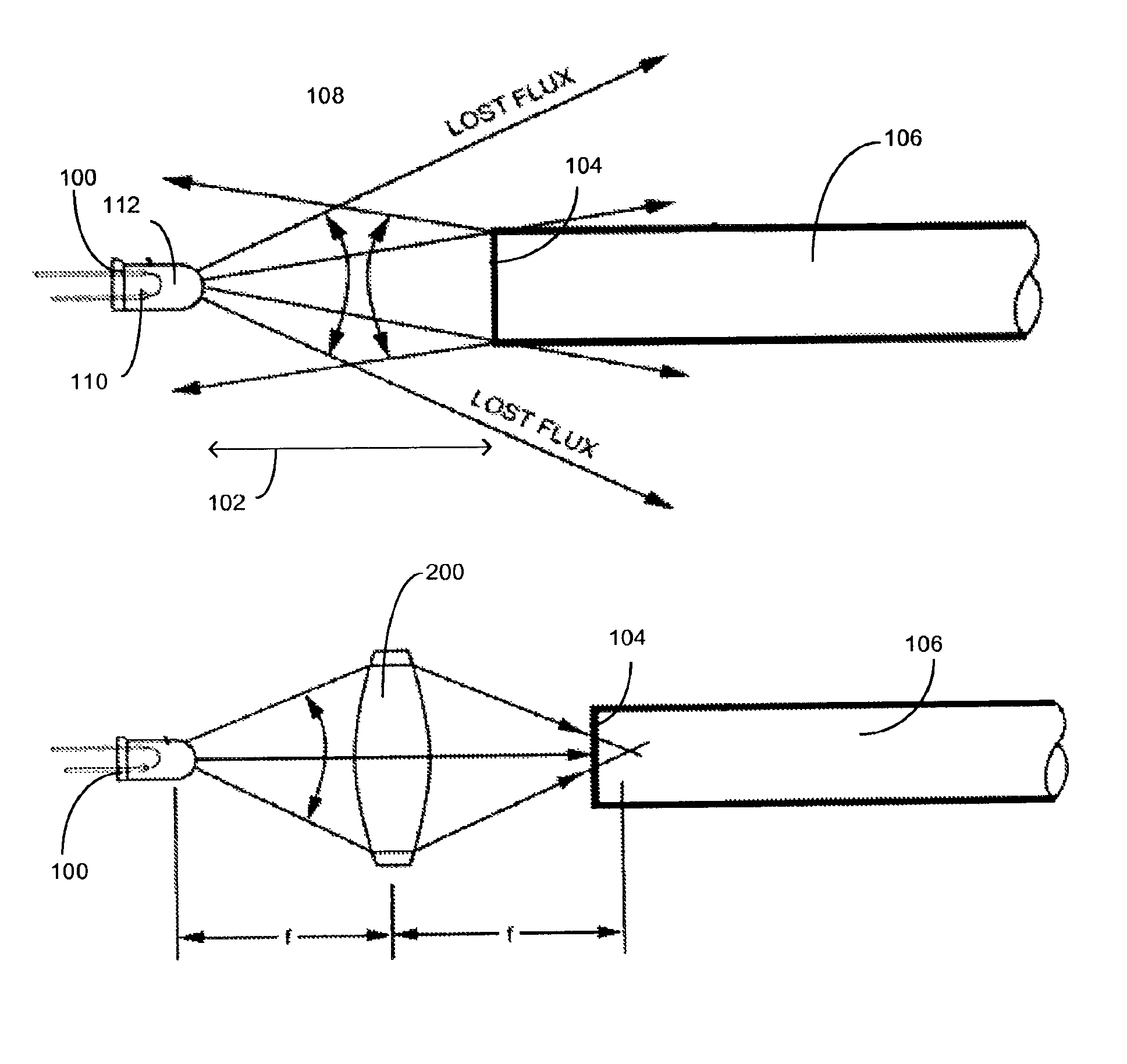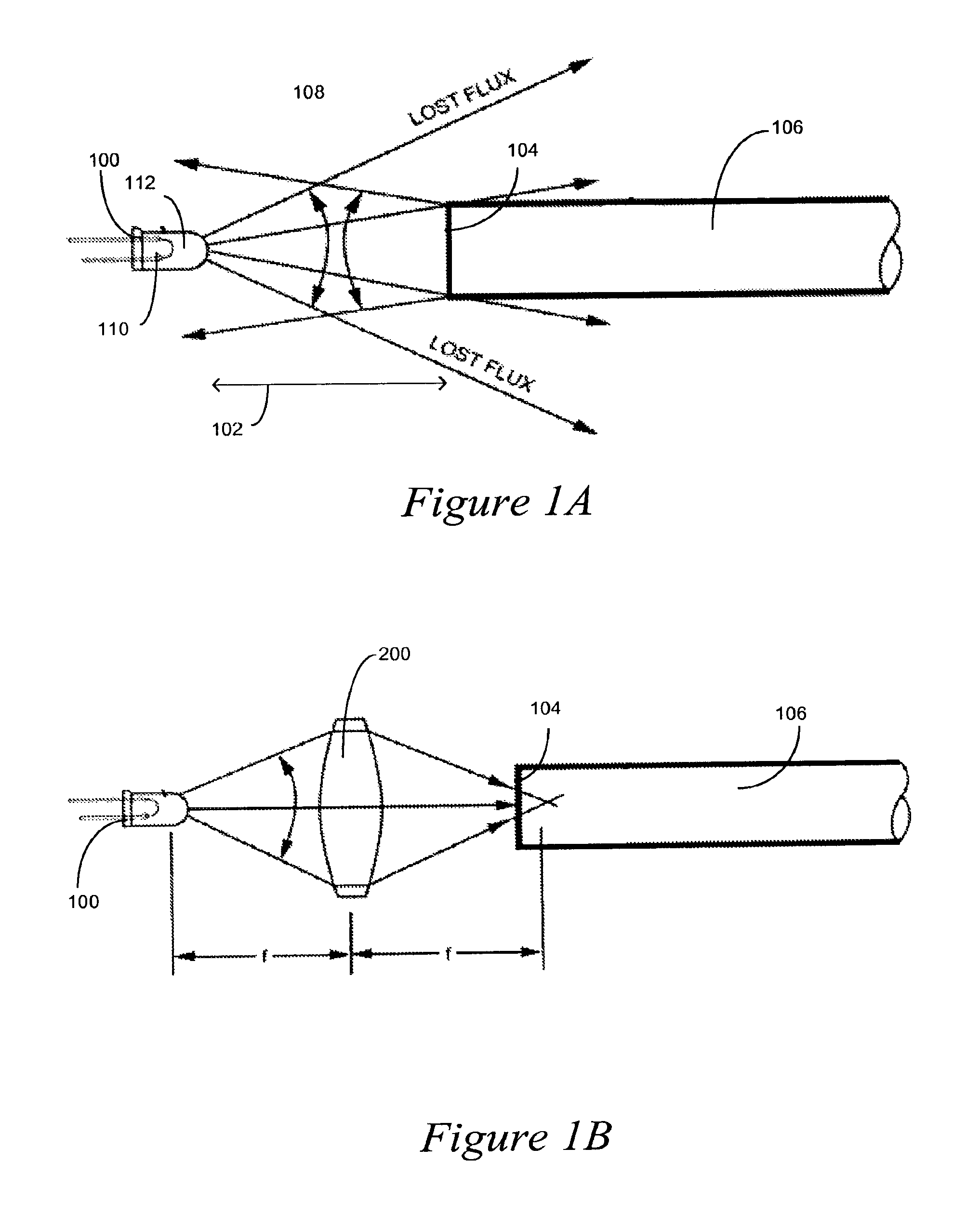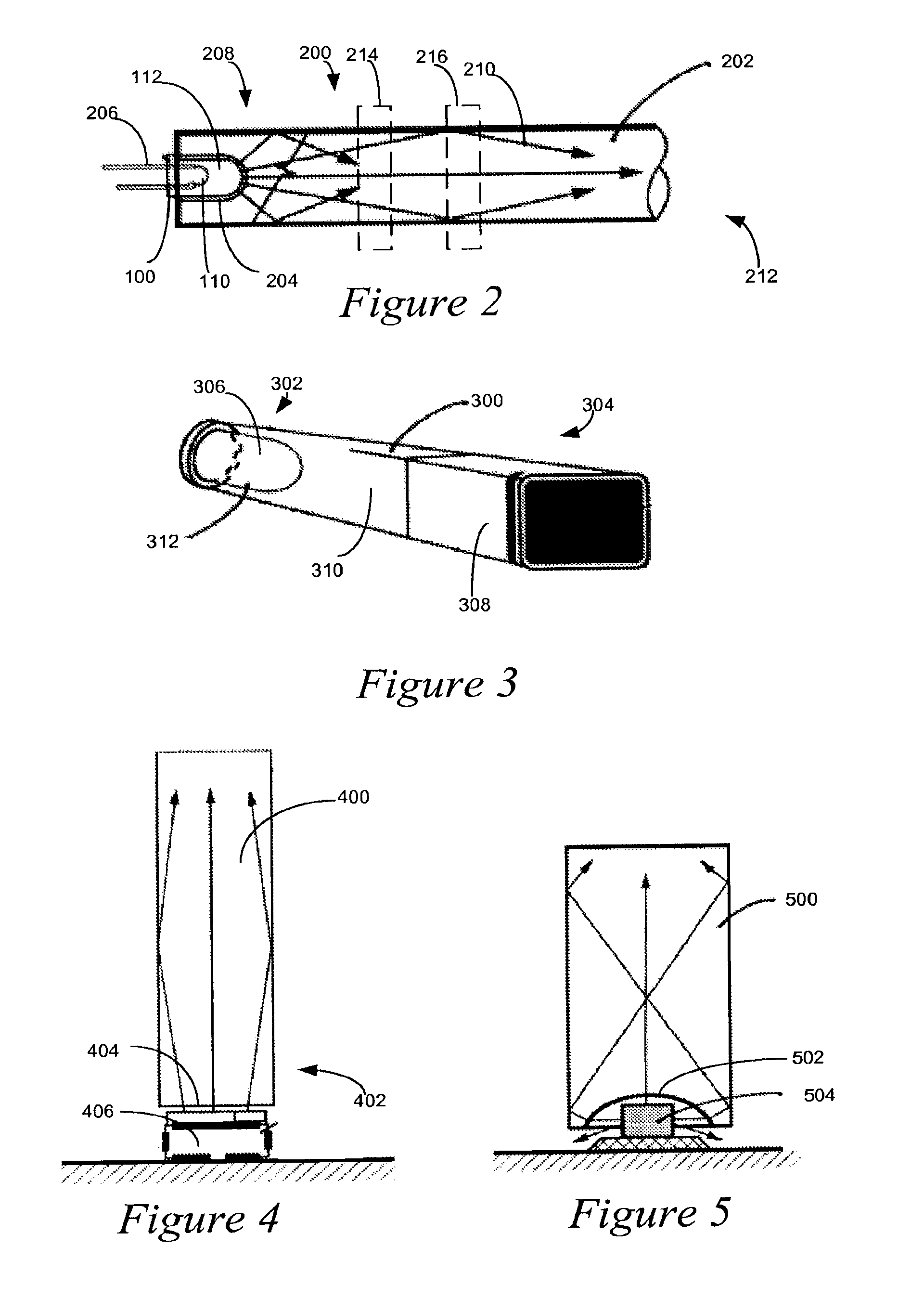Light guide and associated light assemblies
a technology of light guides and light assemblies, applied in the field of light guides, can solve the problems of compromising light uniformity, increasing production and manufacturing costs, and the length of light guides, and achieves the effects of improving thickness control, reducing production and manufacturing costs, and reducing production costs
- Summary
- Abstract
- Description
- Claims
- Application Information
AI Technical Summary
Benefits of technology
Problems solved by technology
Method used
Image
Examples
example 1
Reagents
[0239]
Phenyl-T Resin 1.581 mols Si216.0 g(FW = 136.6 g / mol Si)OH-PhMe-OH 1.937 mols Si264.0 g(FW = 136.3 g / mol Si)0.0200 mols SiOH1.03 mol % OH50 / 50 MTA / ETA Distilled 0.187 mols Si43.16 gAvg. FW = 231.2 g / mol SiToluene720.0 g
Procedure:
[0240]A 2 L 3-neck round bottom flask was charged with toluene (544.0 g) and Phenyl-T Resin (216.0 g). The flask was equipped with a thermometer, Teflon stir paddle, and a Dean Stark apparatus attached to a water-cooled condenser. A nitrogen blanket was applied. The Dean Stark apparatus was prefilled with toluene. A heating mantle was used for heating. The solution was heated at reflux for 30 minutes and then cooled to 108° C. (pot temperature). A solution of toluene (176.0 g) and OH—PhMe—OH (264.0 g) was capped with 50 / 50 MTA / ETA (4.84 g, 0.0209 mols Si) in a glove box (same day) under nitrogen by adding the methyl triacetoxy silane (MTA) / ethyl triacetoxy silane (ETA) to the OH—PhMe—OH and mixing at room temperature for 2 hours. This solution ...
example 2
Reagents
[0241]
Phenyl-T Resin 2.044 mols Si 280.2 g(FW = 137 g / mol Si)184 DP silanol term. 9.690 mols Si 720.0 gPDMS0.0979 mols SiOH(FW = 74.3 g / mol Si)~1.01 mol % OH50 / 50 MTA / ETA Distilled 0.201 mols Si 46.34 gAvg. FW = 231.2 g / mol SiToluene1500.0 g DI water 325.7 g
Procedure:
[0242]A 5 L 4-neck round bottom flask was charged with toluene (1000.0 g) and Phenyl-T Resin (280.2 g). The flask was equipped with a thermometer, Teflon stir paddle, and a Dean Stark apparatus attached to a water-cooled condenser. A nitrogen blanket was applied. An oil bath was used for heating. The Dean Stark apparatus was prefilled with toluene and the solution was heated at reflux for 30 minutes and then cooled to 108° C. (pot temperature). A solution of toluene (500.0 g) and silanol terminated PDMS (720.0 g) was then capped with 50 / 50 MTA / ETA in a glove box (same day) under nitrogen by adding 50 / 50 MTA / ETA (23.77 g, 0.1028 mols Si) to the silanol terminated PDMS and mixing at room temperature for 30 min. Th...
example 3
Reagents
[0243]
Phenyl-T Resin 6.880 mols Si 942.5 g(FW = 137 g / mol Si)OH-PDMS-OH 24.62 mols Si1829.0 g(FW = 74.3 g / mol Si)0.2684 mols OH~1.09 mol % OHMethyltris(methylethylketoxime)silane0.2820 mols 85.0 g(MTO) MW = 301.46Toluene5147.9 g n-butanol 276.0 g
Procedure:
[0244]A 12 L 3-neck round bottom flask was charged with toluene (3803.9 g)+Phenyl-T Resin (942.5 g). The flask is equipped with a thermometer, Teflon stir paddle, and a Dean Stark apparatus attached to a water-cooled condenser. A nitrogen blanket was applied. The Dean Stark apparatus was prefilled with toluene. A heating mantle was used for heating. The solution was heated at reflux for 30 minutes and then cooled to 108° C. (pot temperature). A solution of toluene (1344 g)+OH-PDMS-OH (1829.0 g) was then capped with MTO in a 5 L 3neck round bottom flask in a nitrogen atmosphere and mixed at RT for 2 hrs. Subsequently, this solution was added to the Phenyl-T Resin at 110° C. This reaction mixture was initially opaque, but th...
PUM
| Property | Measurement | Unit |
|---|---|---|
| refractive index | aaaaa | aaaaa |
| refractive index | aaaaa | aaaaa |
| weight percent | aaaaa | aaaaa |
Abstract
Description
Claims
Application Information
 Login to View More
Login to View More - R&D
- Intellectual Property
- Life Sciences
- Materials
- Tech Scout
- Unparalleled Data Quality
- Higher Quality Content
- 60% Fewer Hallucinations
Browse by: Latest US Patents, China's latest patents, Technical Efficacy Thesaurus, Application Domain, Technology Topic, Popular Technical Reports.
© 2025 PatSnap. All rights reserved.Legal|Privacy policy|Modern Slavery Act Transparency Statement|Sitemap|About US| Contact US: help@patsnap.com



